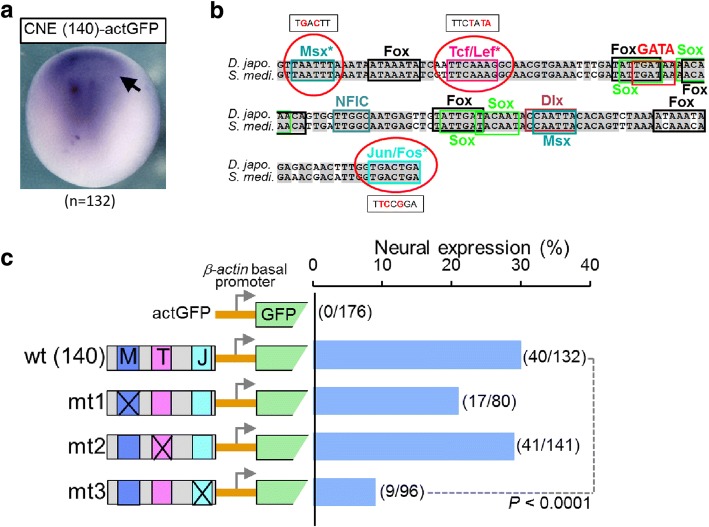Fig. 7.
Transgenic experiments suggested that Djndk CNE3 might be a regulatory element. a The arrowhead shows CNE3 inserted actGFP vector, CNE (140)-actGFP driven GFP to express in the anterior region at the end of gastrulation in transgenic Xenopus embryos (n = 132). b Putative transcription factor-binding motifs are boxed in different colors; those subjected to mutation analysis are indicated by asterisks. The detailed point mutation design of three transcription factor-binding motifs are shown by red colored words. c Mutation analysis of CNE3 (the 140 bp element). actGFP is an empty reporter construct that contains the β-actin basal promoter; wt (140) is the construct of CNE (140)-actGFP used in (a); mt1, m2 and mt3 are point mutations (Msx (M), Tcf/Lef (T), and Jun/Fos (J)) generated from wt (140), and the detailed mutation design is shown in (b). The bar chart shows the percentage of the embryos that showed GFP expression in the neural plate among total developed embryos injected with the vector constructs. Actual numbers of GFP-positive cases and total numbers of scored embryos are indicated in parentheses. The chi-square test showed that the percentage of positive cases in the wt (140) and the Jun/Fos mutant constructs are significantly different (P < 0.0001), whereas the differences observed in other cases were not significant (P > 0.05)

